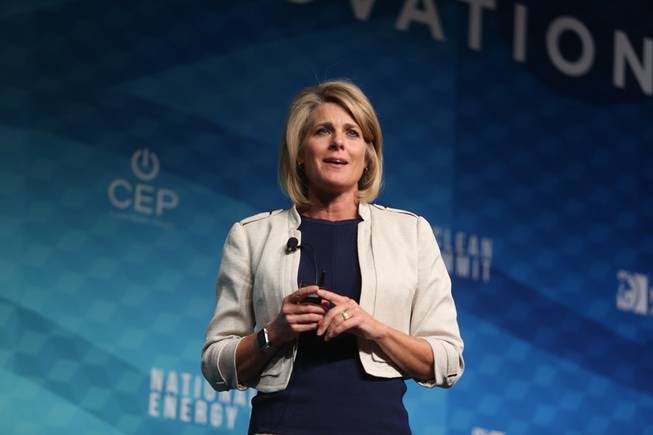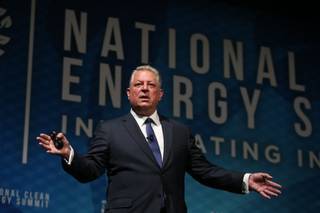
Tina Quigley, general manager of the Regional Transportation Commission of Southern Nevada, speaks during the National Clean Energy Summit 9.0 at the Bellagio on Friday, Oct. 13, 2017.
Friday, Oct. 13, 2017 | 12:45 p.m.
Related Coverage
When Audi went looking for a city where it could test technology allowing its cars to communicate with street lights, it took one call to get the test started in Las Vegas.
Launching in Los Angeles would have required 133 calls, Tina Quigley, general manager of the Regional Transportation Commission, said today at the National Clean Energy Summit.
Her point? Las Vegas, due to the streamlined structure of its transportation system, is well-positioned to take advantage of innovative technology to make traffic move more smoothly and safely. Unlike in communities like L.A., where traffic signals and other transportation operations are overseen by multiple agencies, the system in Las Vegas is under the RTC’s umbrella.
“We’re leveraged very well to start deploying this (kind of) technology in Southern Nevada,” she said.
For Audi, Quigley said, the result is that Southern Nevada is the only area where the company has been able to successfully deploy its technology, which lets drivers know how much time is left in red-light cycles and eventually is meant to exchange data with other cars. In the long term, the technology would provide information on light cycles, accidents, weather and other information to help drivers avoid congestion and reach destinations more quickly.
Quigley spotlighted Audi as one of several companies testing innovations in Las Vegas. Among others: The maker of an autonomous shuttle, which conducted its first test in the city, and a company that uses both historical and real-time data to predict where problems may soon occur on roadways.
Citing predictions that the Las Vegas population would grow to 2.7 million in 2025 and that the number of annual visitors would increase to 53 million by that time, Quigley said it was critical to explore such innovations. “We know we can’t lay down enough asphalt” to make Las Vegas’ already-congested streets and highways handle the growth, she said.

